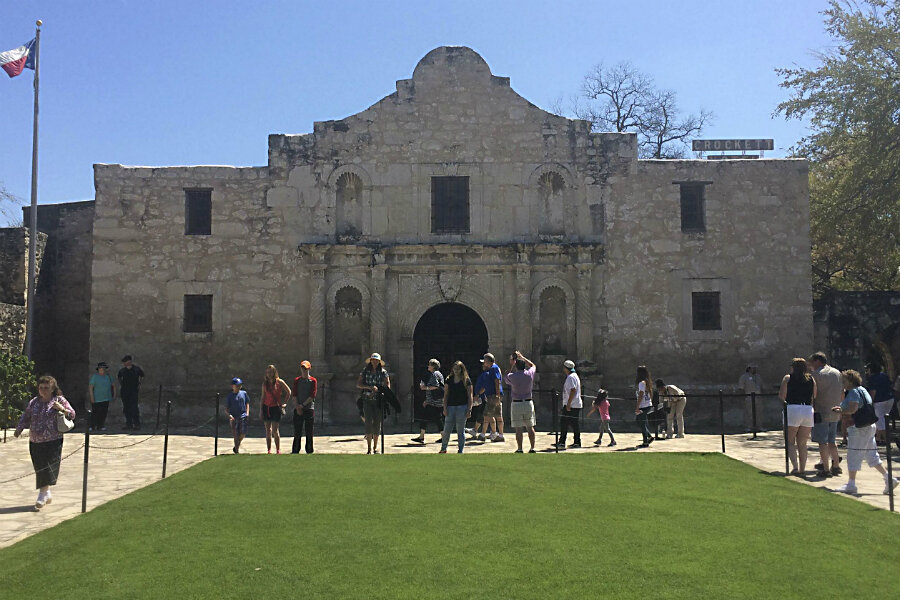Will San Antonio missions' world heritage status be a boon for Texas?
Loading...
San Antonio’s five Spanish Roman Catholic missions were recognized by the United Nations Educational, Scientific and Cultural Organization ( UNESCO) as a World Heritage Site on Sunday.
The sites, built in the 18th century in and around what is now the city of San Antonio, include the missions Valero (the Alamo), Concepción, San José, San Juan, and Espada. They were used by Spain to convert indigenous people to Catholicism and make them Spanish subjects.
The decision was announced at the 39th annual session of the World Heritage Convention in Bonn, Germany.
“The City of San Antonio is delighted with UNESCO’s action today and the recognition that our Spanish colonial missions are of outstanding cultural and historical value to the people of the world,” said San Antonio Mayor Ivy Taylor. “The strong collaboration responsible for our application, which includes an ongoing commitment to protect and preserve the missions, will also continue to work together to tell our story to visitors from around the globe and build even stronger relationships with countries like Mexico and Spain, because we are telling their story too.”
World Heritage status is given to sites of "outstanding universal value" with the aim of protecting them for future generations. “This community is known for protecting its heritage and I have no doubt we will continue sharing our heritage with the world,” said Bexar County Judge Nelson Wolff.
The UNESCO inspection report stated: "The San Antonio Missions are an exceptionally complete example of the Spanish Crown’s efforts to colonize, evangelize, and defend its empire. The missions are also testimony to an interweaving of cultures from the European and North American continents.
“The five missions likewise are a unique example of mission complexes lying in proximity and sharing a common approach to defense. In this density of evangelization activity, it is even more remarkable, that each mission established dependent communities which were prepared for secularization.”
According to a report evaluating the potential economic impact of the recognition of the five missions on San Antonio and Bexar County, the UNESCO designation is expected to generate up to $105 million in additional economic activity and up to 1,098 extra jobs by 2025.
This prestigious designation is Texas’s first and the 23rd in the United States. Other US sites include New York's Statue of Liberty, Mammoth Cave National Park in Kentucky, the Grand Canyon in Arizona, Yellowstone National Park in Wyoming, Louisiana’s Poverty Point, Philadelphia's Independence Hall, and others.







